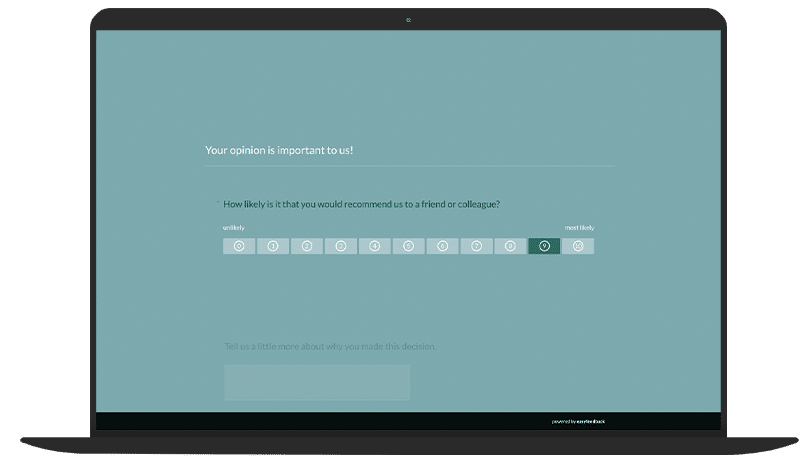The importance of customer enthusiasm
Customer enthusiasm arises when expectations are not only met, but exceeded.
It is closely linked to positive emotions such as joy, surprise or satisfaction.
Enthusiastic customers are characterized by a higher repurchase rate, stronger loyalty to the brand and a high willingness to recommend the product to others.
Studies show that enthusiastic customers often spend more and remain loyal for longer than merely satisfied customers.
Why measure customer enthusiasm?
Customer enthusiasm is an indicator of a customer’s emotional attachment to a company or brand.
Enthusiastic customers remain loyal, are willing to pay more for products or services and often share their positive experiences with others.
By measuring this enthusiasm, companies can not only identify their strengths and weaknesses, but also develop targeted measures to improve customer loyalty.
Options for measuring customer enthusiasm
1st option: Net Promoter Score (NPS)
The Net Promoter Score is one of the best-known methods for measuring willingness to recommend.

Customers answer the question: “How likely is it that you would recommend our product/service to a friend or colleague?” on a scale of 0 to 10.
Enthusiastic customers (promoters) usually give a rating of 9 or 10.
However, the NPS alone is not sufficient to capture the emotional component of enthusiasm.
2nd option: Customer Effort Score (CES)
The CES measures how easy or difficult it is for customers to clarify an issue or make use of a service.
Customer enthusiasm often arises when processes are seamless and uncomplicated.
3rd option: Emotional customer surveys
Questions that focus on emotions (“How did you feel when you used our product?”) provide valuable information on whether enthusiasm was triggered.
This qualitative data can be combined with tools such as easyfeedback or sentiment analysis from social media feedback.
4th option: Social media monitoring and reviews
Enthusiastic customers often share their experiences online.
Reviews, comments and social media mentions can be analyzed to identify positive sentiment and enthusiasm.
Option 5: Customer interviews and focus groups
Direct conversations with customers offer in-depth insights into their emotions and motivations.
This qualitative method is particularly suitable for obtaining detailed feedback on customer enthusiasm.

Steps to promote customer enthusiasm
To measure and increase customer delight, companies should:
- Understand customer expectations: Regular feedback helps to identify and specifically exceed expectations.
- Create emotional moments: Small, surprising gestures or a personal approach can trigger enthusiasm.
- Use data analysis: By linking NPS, CES and other key figures, valuable insights can be gained.
- Train employees: Enthusiasm often starts with the employees. Training and motivation are crucial to providing excellent service.
Conclusion
Measuring customer enthusiasm is challenging but worthwhile.
It requires a combination of quantitative and qualitative methods as well as a deep understanding of customer needs and expectations.
Companies that work specifically on their enthusiasm strategy benefit from loyal, committed customers and a stronger market position.
The key lies in focusing on emotions and inspiring them again and again.






